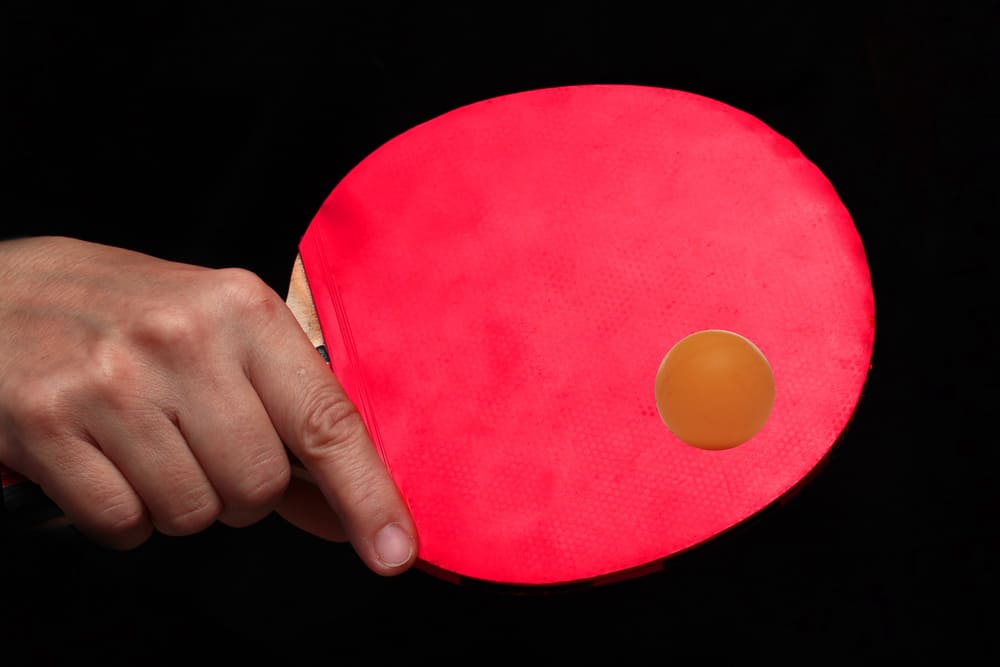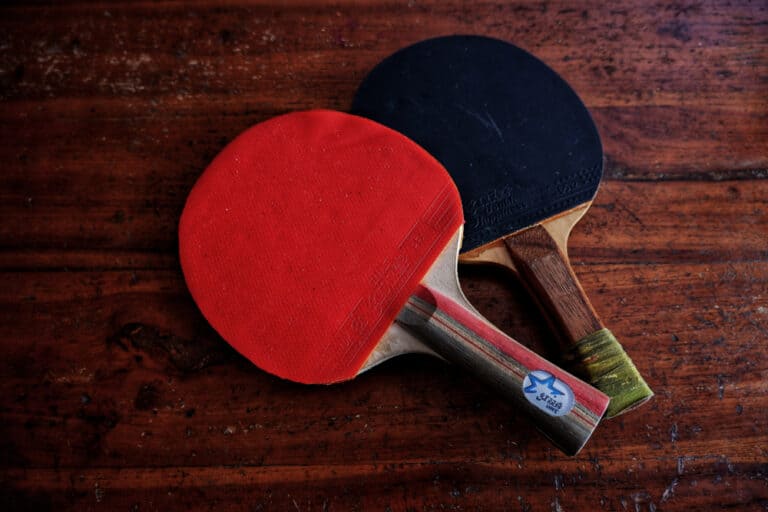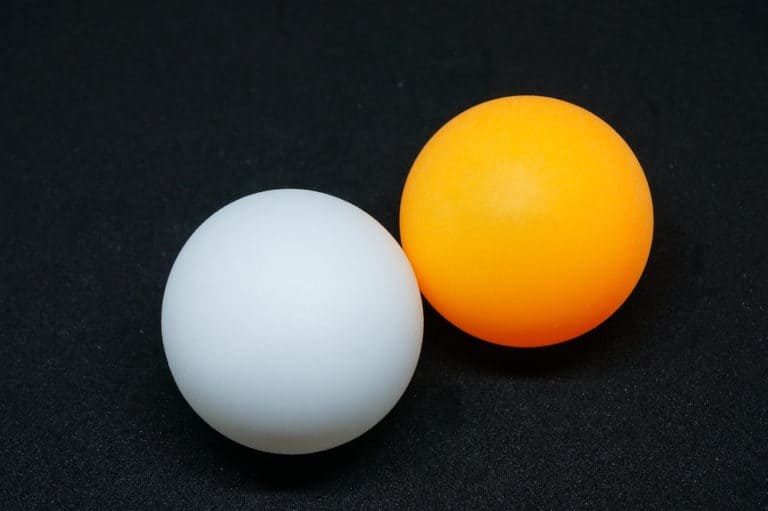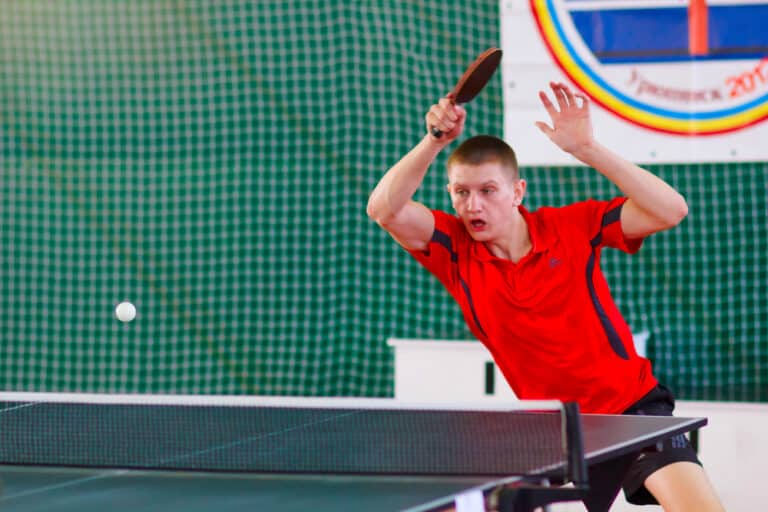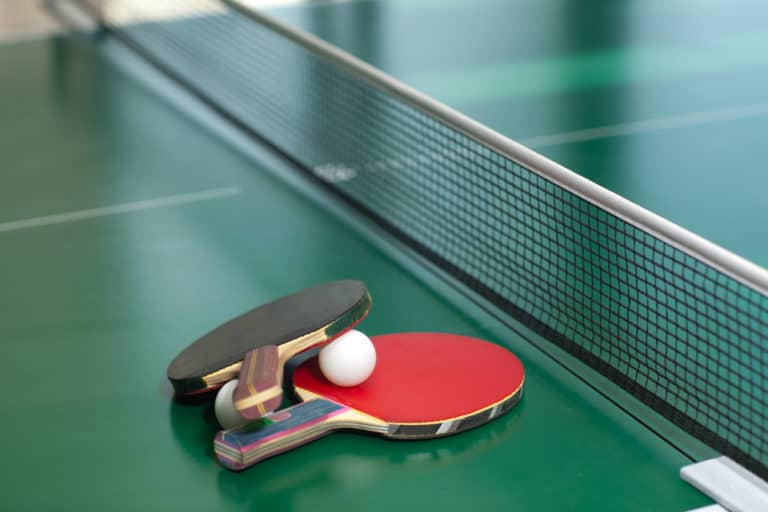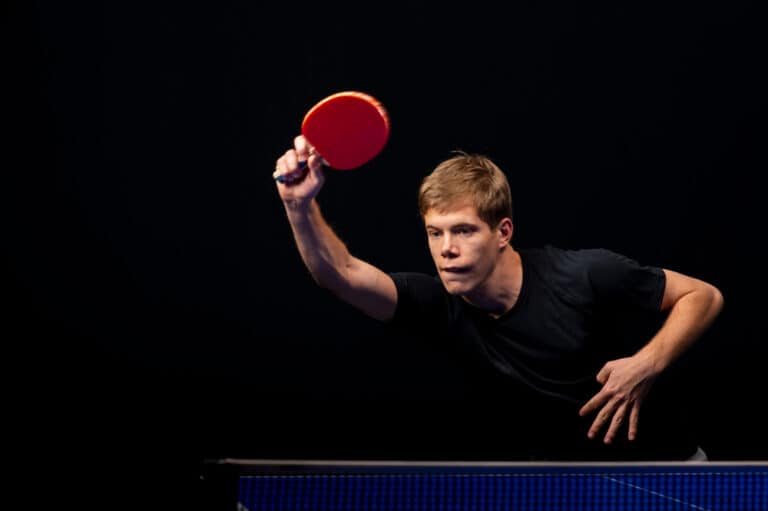Which Is Better: Penhold Vs Shakehand?
Whether you’re learning to play table tennis or you’re a player with some experience behind you, it’s good to know more about the sport you play. The two main grips in table tennis are the shakehand grip and the penhold grip. Most top professional players use these two grip styles, and there is much debate over which is better.
In table tennis, the penhold grip gives players more speed and spin and leaves the player with a lacking backhand but more decisive offense and defense. On the other hand, the shakehand is more of an all-rounder. The shakehand grip also offers more versatility and a solid backhand.
Knowing which grip to use is essential when learning to play table tennis. Deciding which grip to use can be tricky for beginners and skilled players. There are both advantages and disadvantages to the shakehand and penhold grips. Since there’s no ‘right’ way to play, our list clearly defines the differences between them so you can decide which grip is best for you.
The Penhold Grip
The penhold grip is a table tennis grip popular among Asian players. When learning table tennis, most beginners from China, Japan, and Korea are taught to hold the racket in the penhold style. Although shakehand is more widely used, some of the world’s best competitive players use penhold instead.
The penhold grip looks like it sounds – as if you’re holding a pen. The player starts by wrapping their thumb and index finger around the base of the handle. They slightly curl the other three fingers on the back face of the racket for support and control. However, this is only one variation of the penhold grip. The penhold style typically focuses on increasing forehand performance while it tends to neglect the backhand.
There are other variations of the penhold grip, though their differences are slight. The variations focus mainly on how a player positions their fingers. Chinese, Japanese, and Korean players all have variations of this grip style. While they are slightly different, these penhold grip variations are the most popular. They are used by professional players like Xu Xin, Ma Lin, and Wang Hao.
Another variation is for the thumb to be parallel to the racket with the index finger curling around the handle. The last traditional variation of the penhold is for the thumb and index finger to wrap around the handle while the three remaining fingers are laid flat against the back of the racket.
It can be challenging to decide whether to use the penhold grip when learning to play because the shakehand grip is so popular. If you’re a beginner table tennis player, there are a few factors to consider when choosing your grip style.
Advantages Of The Penhold Grip
The penhold grip has some advantages over the shakehand grip, such as the improved wrist flexibility of the penhold grip. This flexibility allows players to create more spin on the ball, to be more unpredictable, and gives players more speed on the forehand. The penhold grip is most prevalent in Asian countries because many of the players are taught using this style.
The extra spin that penhold provides is excellent for attacking at mid to close distances to the table. Players using the penhold grip find looping easier due to the increased spin on the ball, meaning they can swing harder and commit to their attacking play style.
Looping is when a player puts heavy topspin on the ball that causes it to arc downwards towards the table. This is an excellent attacking method because the spin helps the ball move down toward the table while maintaining high speed. These characteristics make for a deadly shot with the penhold grip.
The spin offered by the penhold grip doesn’t only apply to attacking and looping. With this grip, the backspin is also deadly and easy to apply to your shots. The flexibility in your wrist gives you an increased natural angle to control the ball and give it spin. Many defensive players use the penhold grip for this reason.
Disadvantages Of The Penhold Grip
For many players, the penhold grip feels unnatural in their hand, while the shakehand grip is much more comfortable. This natural comfort causes many beginners to choose shakehand over penhold.
Not only does penhold feel unnatural in hand, but it also takes much longer to become proficient enough to the point where players can compete. Penhold has a much steeper learning curve than shakehand because players must get comfortable with the odd grip and play style.
A coach is essential if a player wants to continue to improve their game past the point of casual play. Because the penhold grip style is not as popular as the shakehand, there are fewer coaches and players from whom to learn. This lack of availability makes it difficult to progress to a higher skill level. These are a few disadvantages of the penhold grip that cause many players to avoid it.
Regarding actual play using the penhold grip, it excels in some areas beyond the shakehand. However, it is lacking in other areas and provides little to no help to the player. The backhand is the penhold grip’s main weak point. Because of the angle at which players hold the racket, they have minimal reach on their backhand side. Subsequently, the scope of shots a player can return with decent power is limited.
The limited range of the penhold grip means that players will need to put more effort into footwork. Better footwork allows players to move into positions advantageous to them more easily. In the case of the penhold style, this means moving in a way that limits the number of shots players will have to receive on their backhand side – for example, dashing to the left to receive the ball on the forehand.
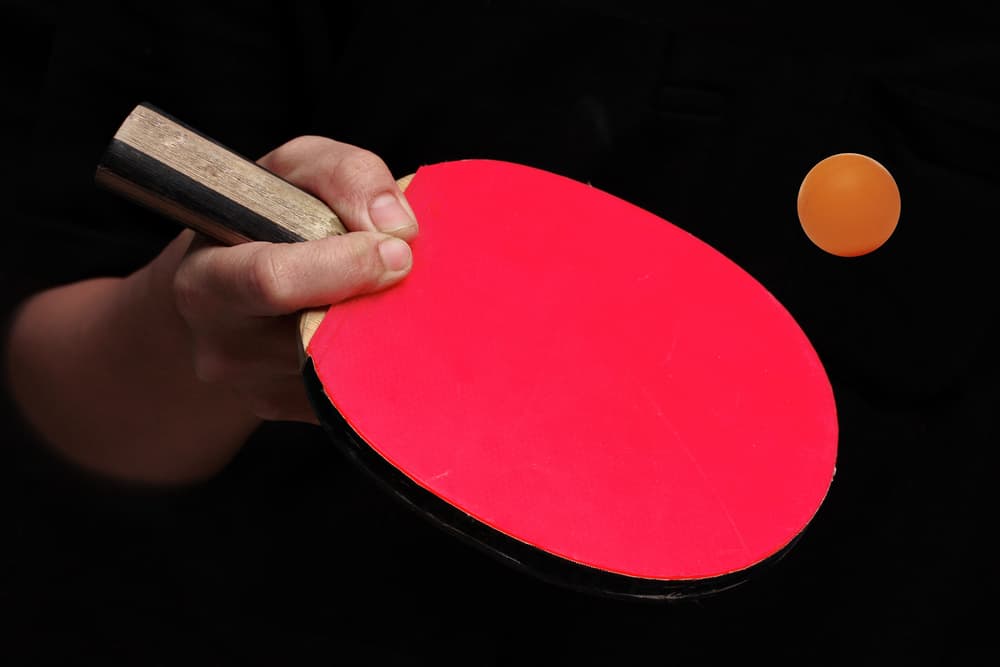
The Shakehand Grip
The shakehand grip, similar to the penhold grip, looks as it sounds. The player grips the racket as if shaking hands. Three fingers will wrap around the handle while the thumb rests on the front of the racket. The index finger lies on the back of the racket perpendicular to the handle. This is the most popular grip in the world, and most players use the shakehand grip style.
The shakehand grip is most used in Western countries but is also popular in some Asian countries. The shakehand grip happens to be how most players would naturally grip the racket when they pick it up. There are two variations of this grip. And although they are similar, the difference is important depending on a player’s play style.
In one variation, called shallow shakehand, the thumb rests on the blade. For deep shakehand, the thumb rest on the actual rubber of the racket. The shallow shakehand grip gives players more power and spin in their shots because of better wrist flexibility due to the looser grip. It also makes it easier for players to make faster adjustments at short notice.
The deep shakehand variation gives players a firmer grip for more control and defense. While wrist flexibility is lower, players can control their shots more easily and use less power. Suppose you’re learning to play table tennis. In that case, it’s a good idea to consider all the advantages and disadvantages of the kind of grip you want to use.
Advantages Of The Shakehand Grip
The shakehand grip is the most widely used grip style in the world. It is used by many players, including most top professional players. It offers versatility and an even balance across all its facets. The main advantage of the shakehand grip is that it allows players to perform backhand shots easily. The ability to switch to the backhand is one that the traditional penhold grip lacks.
The shakehand grip gives players more overall power in their shots, allowing them to play further from the table. The powerful shots, in turn, let players use even more power, forcing the opponent to back away from the table or to block and play defensively. For shakehand players, being further away from the table and having a solid backhand makes it unnecessary to focus as much on footwork.
Another advantage of the shakehand grip is that it feels more natural in players’ hands, as that is how most would hold a racket. Instead of training to hold the racket correctly, players can advance to playing quickly. Raising players’ skill levels is easier as they do not have to get used to how they grip the racket. Because the shakehand grip is so popular, finding a coach or better players to learn from is very easy.
The backhand backspin and the forehand topspin serves are popular among many shakehand players. The shakehand grip offers more versatility with serves. There are many serves players can perform with this grip and changes they can make with slight adjustments to the grip. Players can switch between deep and shallow depending on the situation without too much confusion.
Disadvantages Of The Shakehand Grip
While the shakehand grip allows players to switch between forehand and backhand easily, it causes a moment of indecision. This indecision is because when the racket is resting, it usually points towards the opponent to allow players to switch faster.
Another aspect worth mentioning is what’s known as the crossover point. The crossover point is when the ball is aimed directly in front of the player. The player must decide whether to sidestep and use their forehand or use their backhand. It isn’t easy to do either from that position. Despite being able to choose, choosing which to use can cause delays in their actions under pressure.
The shakehand grip reduces players’ wrist flexibility, so ball coming at tricky angles may be more challenging to return correctly. Players can aim for these shots to take advantage of the shakehand grip’s weakness.
Additionally, because the shakehand grip style is the grip used by the majority of players around the world, playing against someone using a different grip is uncommon. This can be confusing for shakehand players who haven’t experienced playing against others who use another grip style. Not only is it more difficult to predict where shots might go, but the shots are also performed differently.
This means that it may not be evident to you what kinds of spin your opponent is using on the ball, and it could cost you the match. Shakehand grip players are far more common in Western countries than penhold grip players, but there are a few. Playing against a penhold grip player can be confusing and intimidating because of the attacking nature of the style.
Penhold Vs Shakehand: Which Is Better?
When comparing the shakehand grip style and the penhold grip style, it is difficult to say which is better. They each have their advantages and disadvantages. But the shakehand offers versatility that the penhold grip lacks. Players can loop the ball with the shakehand style but not as naturally as with the penhold style making it slightly easier for penhold players to go on the attack.
The problem of the penhold grip’s backhand has been solved by a new style of penhold grip. The reverse penhold grip gives penhold players a decent backhand and makes up for some of the style’s drawbacks. It only lacks slightly compared to the shakehand grip’s versatility.
When considering whether to adopt the shakehand or the penhold grip, the advantages and disadvantages play a significant part in making that decision. However, the decision generally depends on the player. It depends on their play style and whether they can master their chosen grip. Some players adopt one and then change to the other as they find it more comfortable.
Conclusion
The shakehand and penhold grips are the two most popular grips in the world for table tennis players. They each have aspects that make them desirable, but they also have drawbacks. The shakehand grip surpasses the penhold grip in popularity, so the probability of finding a coach or other players to train with is higher.
The versatility of the shakehand grip is broader than the penhold style, which tends to focus solely on offense or defense. On the other hand, the penhold grip’s style allows players to excel at those aspects that make it one of the most popular grips in the world. It gives players more speed in their shots and more spin, while the shakehand is an all-rounder.

